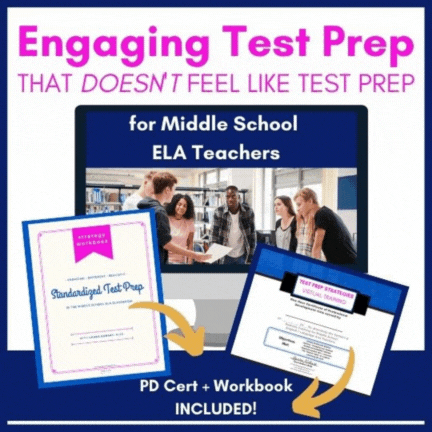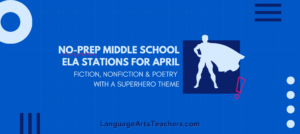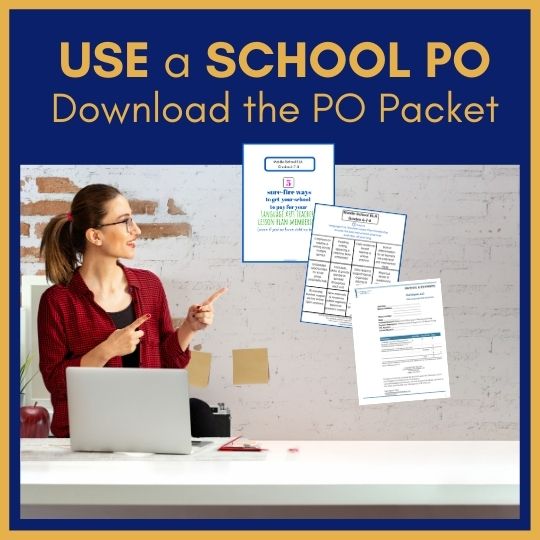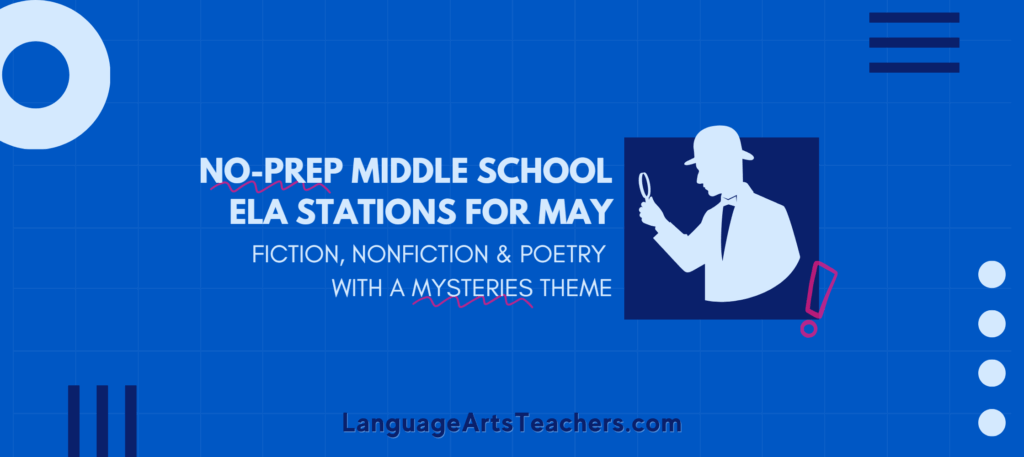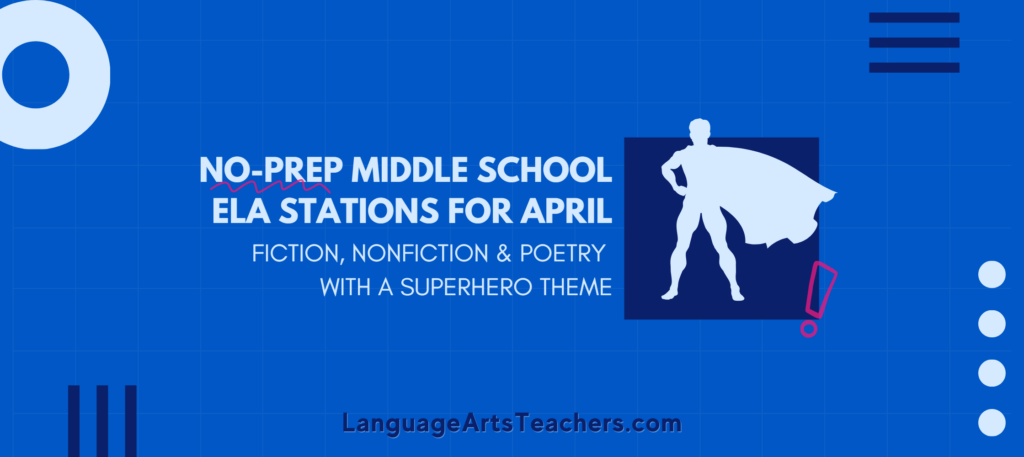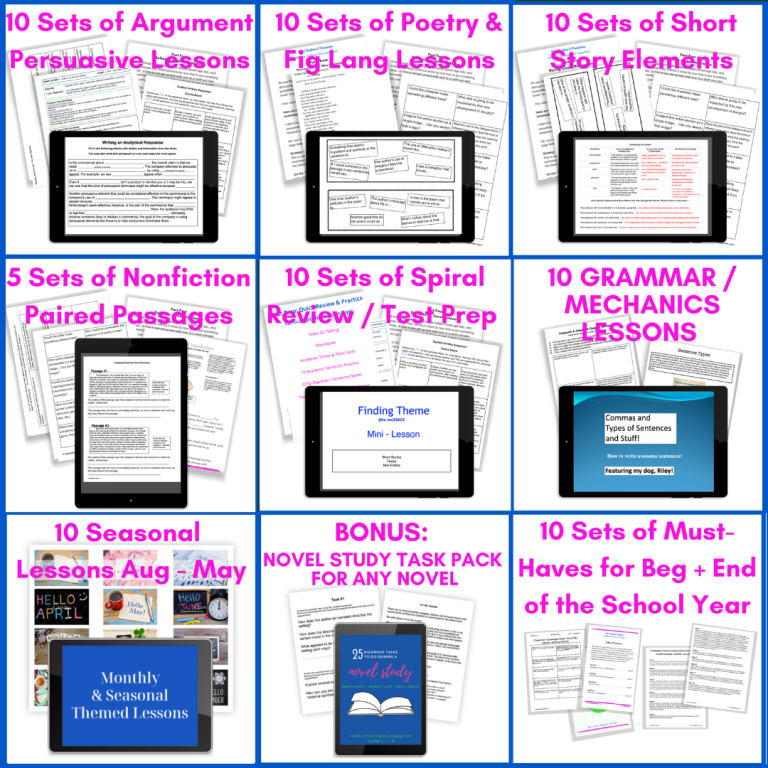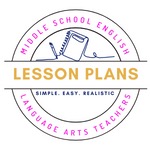Want the ONE magical ELA list of vocabulary for middle school students so that they’ll:
- Grow in their overall comprehension?
- Read with more clarity and fluency?
- Become confident and creative in discussions?
Not to sound all doom and gloom, but there truly isn’t one magical list that’ll make that happen in one school year.
But stay with me because I have a solution. . .
In fact, there’s actually something much better, and it requires little-to-no extra work on your part as a teacher (that’s the BEST, right?).
Really, in order to grow your students’ reading comprehension, fluency, and confidence in language, we have to stop stressing over vocabulary lists . . . And more lists . . . And more endless teacher-created lists of words.
Instead, let’s try this:
- Get students involved in creating the ‘lists’ (less work for us, more hands-on buy-in from them)
- Make the list any number of words you and your students want: 4 words? Fine! 11 words? Fine! Forget the traditional ‘10 words per week’ with a quiz at the end (eye roll) because that locks you and your students into a stressful and totally unnecessary we’re-running-out-of-time-and-we-haven’t-reviewed-our-words-enough-yet weekly scenario
- Stop grading everything all the time LOL! No more weekly vocabulary quizzes means more time for actual reading and discussion and less time spent grading or recording grades over the weekend.
Ok, but HOW… I get the “what” and the thinking behind it, but what about the HOW?

For me, I recommend using vocabulary that you come across naturally in the reading materials.
This way it’s embedded which saves time and it makes sense for students because they’re seeing it in context. I like to have my students choose between 5 – 10 words a week (roughly, give or take) throughout the course of what we’re reading.
I have my students suggest words (or even phrases) they come across in our daily or weekly reading selections and then from there, we’ll narrow it down to 5 -10 depending on time or seriously, depending on the simplest thing needed . . .
Also, each vocabulary list doesn’t have to contain the exact same number of words as before, and we don’t have to end in even or round numbers, either! If we only need to focus on 3 words during a particular week, then fine! If we need to focus on 12, also fine!
Currently, vocabulary is totally embedded throughout my full lesson plan units {CLICK HERE to check it all out} rather than separated into daily must-do’s which only adds stress to an already segmented, overpacked school day.
Ok, so what can you actually have your students DO with the vocabulary words that they and / or you are discovering each week? I go over three specific and no-prep engaging ways to have students genuinely using their words right here, so I won’t rehash all that again.
Another thing I like to do is I like to use Greek / Latin root words as a foundation for vocabulary. When I have more time (like the years I had 90 minutes for ELA rather than 42 minutes), I use root words as the vocabulary (just 2 per day and that gave us 10 for a typical week).
Wait, Laura. . . You just said a second ago that you don’t do the whole “10 words per week + quiz at the end” so what’s going on?
Well, before I go any further, if you need ideas specific to Greek / Latin root words, click here because I have an entire article dedicated to it that will be so super helpful to you if Greek / Latin root words is what you decide you really need to be doing.
Ok, so at the time of my two-a-day words = 10 words per week situation, I was in a school where I was mandated to have a daily vocabulary routine followed by a Friday quiz.
So that’s what I’ve done in order to have some continuity around the words and to help show my students that these weren’t just ‘random’ words chosen for some arbitrary reason by me.
The way I ‘sold’ my students on this is that I told them Greek / Latin roots are basically their ‘cheat sheets’ for understanding pretty much (almost) every unfamiliar word they’ll ever encounter. If they know that all “bene-” words are good and all “mal-” words are bad, then that’s huuuuuge for their overall comprehension and confidence.
I have a basic (not fancy but easy to use) Greek / Latin root word collection inside the lesson plan area. It’s in the “Bonus Resource Library” section which you get full, instant access to when you join the Middle School ELA Teachers Lesson Plan Membership.
As for what I actually DO with Greek / Latin roots during times when I’m in a school where I have to follow strict “you-must-do-the-vocabulary-every-single-day-no-matter-what” mandates, is that I have my students make them into flash cards (you can do digital flashcards using Quizlet or other fun little free apps—have your students make their own!).
The time they spend making fun digital flashcards typically results in them knowing them SO well, just from taking the time to DO something with them that’s interactive and creative.
So in this case, my daily vocabulary practice ends up looking like this if it’s helpful to you:
✅Monday – Use the word in a sentence that also contains context clues.
✅Tuesday – Take a look at other forms of the word (like can you use it with a prefix, or a suffix, or can it become an adjective, etc.).
✅Wednesday – Identify synonyms and antonyms of the word.
✅Thursday + Friday – Quiz each other or play a Kahoot! game.
No time for an actual quiz but you still need to assess?
Have students choose any 5 of the 10 words (assuming you had 10 words that week) and use them correctly in their next writing assignment.
A simple, zero-prep alternative option:
Or, have students return to previous writing assignments and find appropriate places to insert a few of the words. This is so great because (1) if they didn’t do the writing assignment, well, now they have yet another reason to get it done; (2) the so-called ‘writing assignment’ can be literally anything they’ve already written: a journal entry, a warm-up / bell ringer response, an exit ticket.
Sure, it could also be a more formal writing assignment, but it certainly doesn’t have to be. Keep it simple!
Here’s how it’s super easy for you to assess while also ensuring students are putting thought and effort into using vocabulary correctly:
➡️Students can mark the words and mark the context clues they used so you can quickly skim and find the words and then very quickly see if their context clues show that they know the actual meanings and used them correctly.
For time’s sake, I also don’t put pressure on myself (or the students) to do that literally every week. If we have a five day week and then a four day week, I might take two weeks for the vocabulary: identify which words we’re going to use from our reading, make the list, do all the little activities, embed some of them into the writing assignment.
That really, really helps me NOT get overwhelmed with constantly trying to “do” vocabulary every week😊
Looking for naturally-embedded vocabulary as part of your reading / writing ELA teaching needs?
Join hundreds of us from around the country in the Middle School ELA Teachers Lesson Plan Membership so you can jump off the struggle bus 🚌and find confidence, clarity, and creativity again in teaching!



